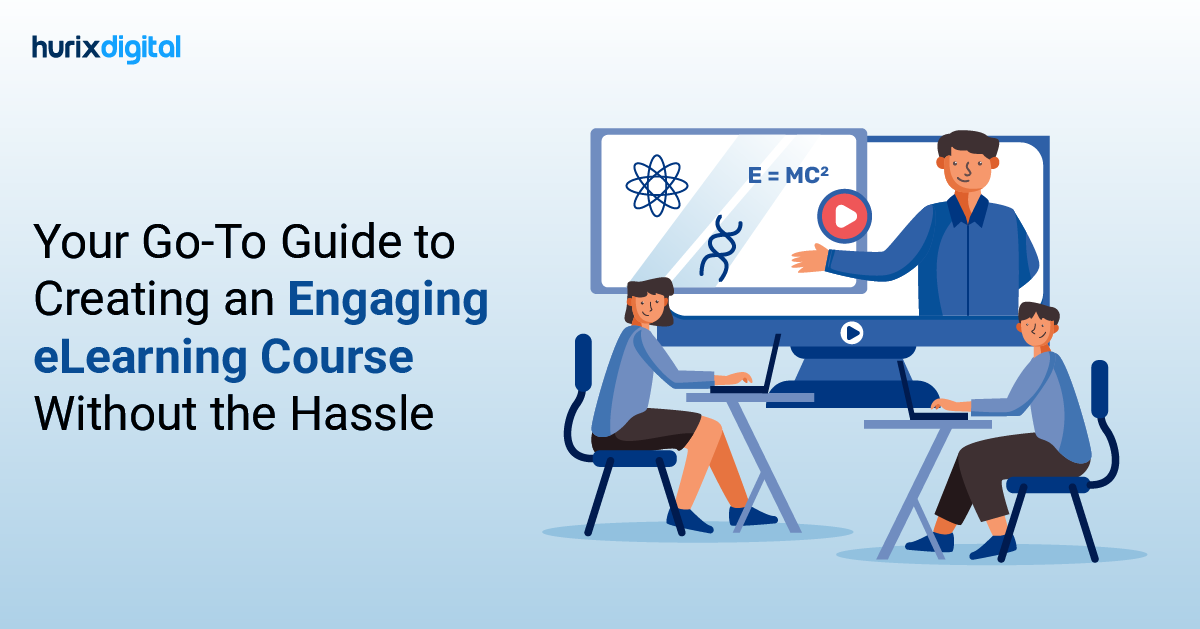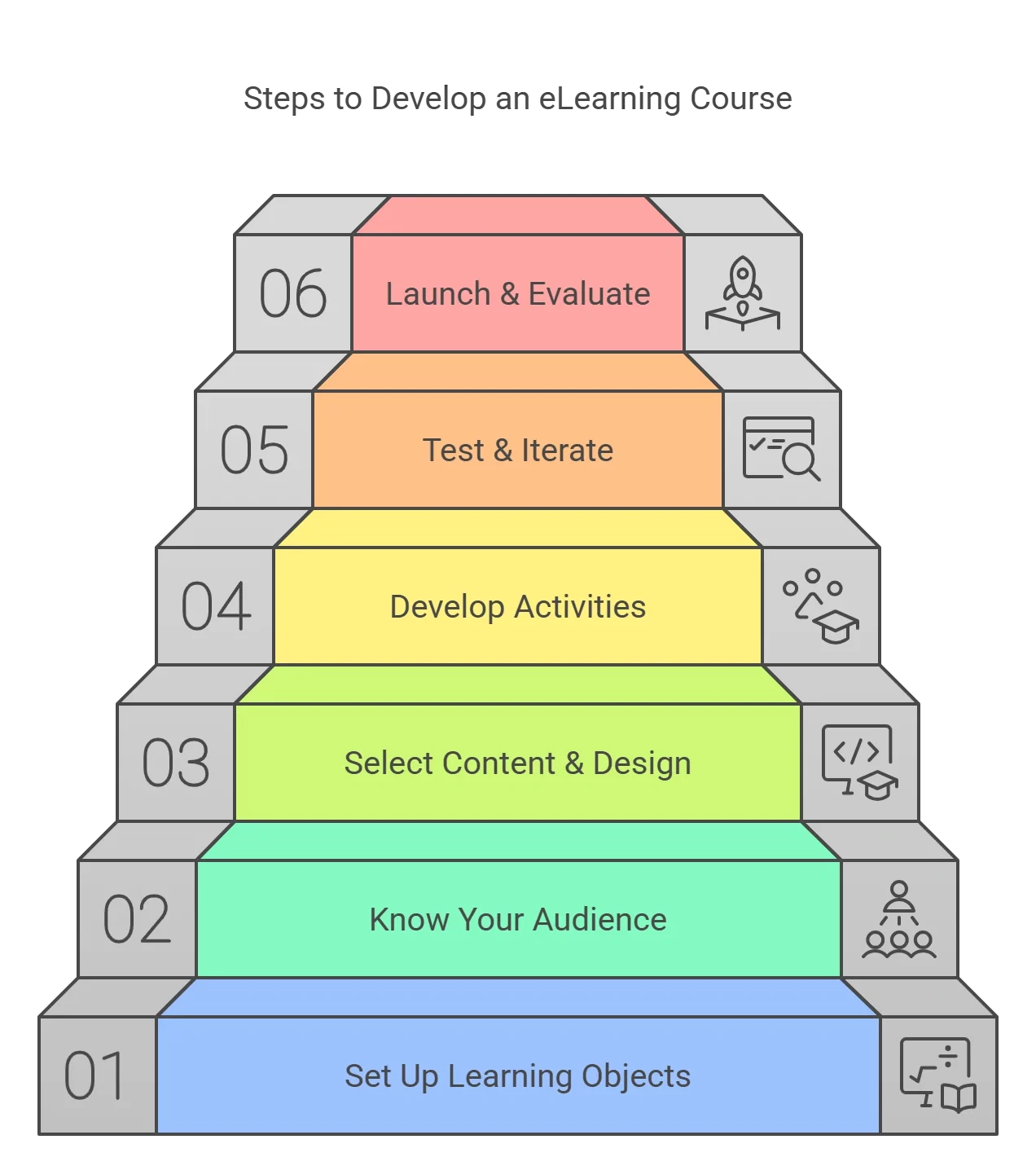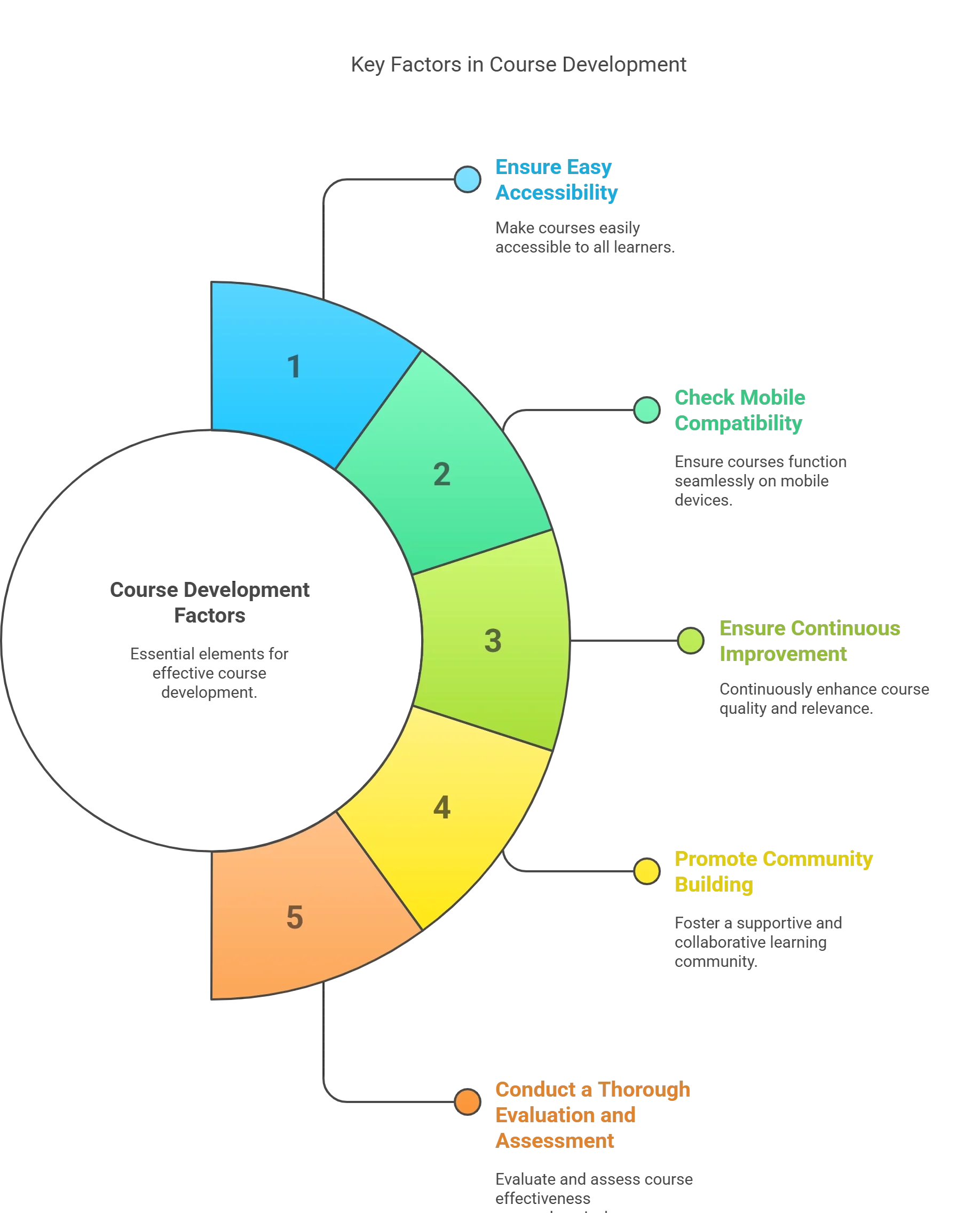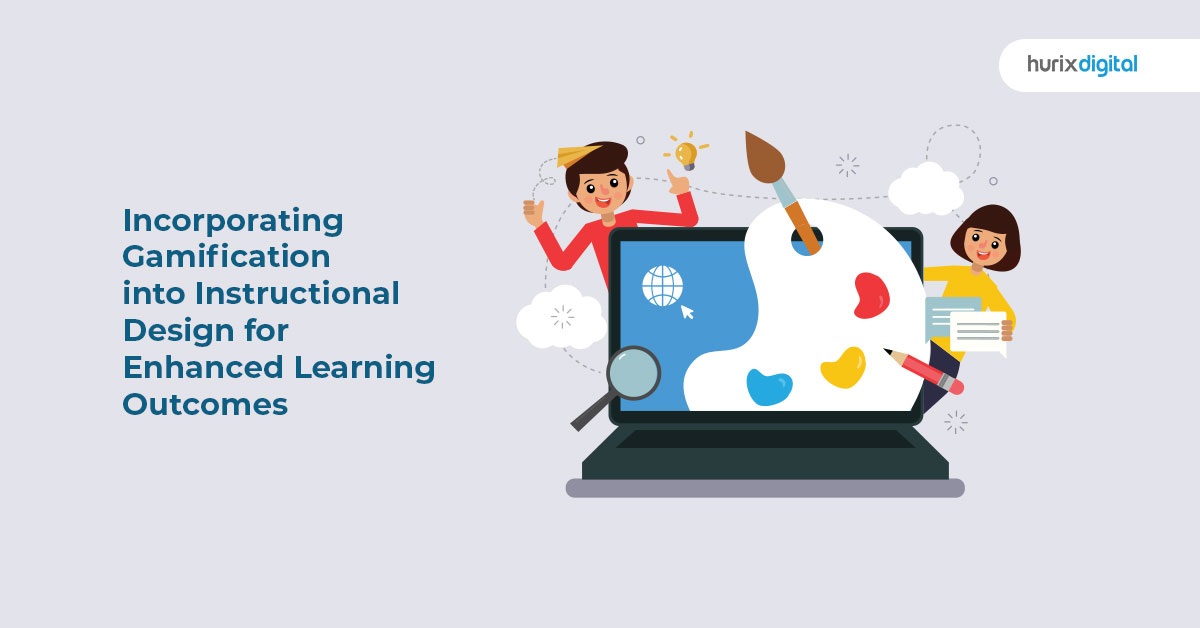
Your Go-To Guide to Creating an Engaging eLearning Course Without the Hassle
Summarize with:
If you are looking for an eLearning Course Development plan for higher education learning or corporate training, you have reached the perfect place!
It could be a tedious job to plan, outline, design, launch, and market an effective eLearning course development structure. Organizations must create an engaging eLearning curriculum design and initiate a powerful Instructional Design Process that can deliver knowledge and engage learners.
It could be difficult to transition from scratch to full-fledged eLearning course planning. Welcome to this step-by-step guide, which professionals and subject-matter experts approve to help you create an exceptional course structure. This process also includes instructional design best practices that will equip you with the appropriate skills and knowledge to create an outstanding course for modern learners.
Table of Contents:
- 6 Easy Steps to Develop an eLearning Course
- Significance of eLearning Course Development
- Factors to Consider During Course Development
- Final Thoughts

6 Easy Steps to Develop an eLearning Course
Creating an eLearning course means following 6 essential steps to help educators and organizations deliver high-quality content. Let us go through the process:
Step 1: Set up Your Learning Objects
All eLearning courses that gain prevalence usually begin with clearly defined learning objectives. Those goals tell students what they can expect to learn during the course. Thus, take some time to think about what specific knowledge or skills you want learners to gain after taking this course.
Also, ask yourself questions like, ‘What are the desired results?’ ‘What should a student be able to do at the end of this module?’ Once you have established these goals, keep them in mind throughout the process of creating content for your lessons.
Step 2: Try to Know Your Target Audience
You must understand our target group well enough to create an effective online education course. We need to know more than just their age bracket; we must also consider factors such as the level of education attained so far or professional background, among others.
What drives them towards learning? What could pose challenges along the way? Such questions help us get into headspaces that are different from ours, which then enables customization according to individual needs during teaching periods.
Step 3: Select Content and Design Course Structure
After identifying learning objectives and knowing who your audience is, choose suitable materials for delivery purposes in this e-learning program. Some examples include text-based readings, videos, and interactive quizzes, among many others. All items used must be engaging enough while still being relevant to the goals mentioned in step one above. Simplify complex ideas by splitting them down into smaller units, but remember multiple-choice questions.
In addition, designing the structure for your eLearning course development is essential. Arrange your contents in a flow that makes sense, beginning with an introduction that sets the scene and ending with a conclusion that restates key takeaways. Split up your course into modules or sections, and each should concentrate on a specific topic or learning outcome. You can create a navigation system allowing learners to move easily through the course while keeping track of their progress.
Step 4: Develop Engaging Activities
Engaging learners is absolutely vital for the success and enjoyment of any eLearning program! Activities that spark interest not only elevate the learning experience but also enhance information retention in remarkable ways. When learners dive into the material and participate actively, they are much more likely to grasp and apply new concepts with confidence.
Beyond traditional quizzes, introducing a variety of activities can truly enrich the learning atmosphere. For example, case studies empower learners to connect theoretical knowledge to real-world scenarios, igniting critical thinking and problem-solving skills. Group discussions foster collaboration and idea sharing, allowing learners to appreciate diverse viewpoints.
Step 5: Test and Iterate
This step involves testing what you have created before releasing it into the World Wide Web as an eLearning course. Ensure everything works fine by inviting a few beta testers who will review the content, navigation, and functionality aspects of the course from their point of view.
Listen carefully while they give feedback, but also be ready to make necessary changes where needed depending on what was suggested during the testing phase since this could help improve the overall design in some cases.
Step 6: Launch and Evaluate
When you are happy with your eLearning course, it is time to publish it to your target audience. Advertise the course through appropriate channels, such as your organization’s learning management system, a dedicated website, or a third-party eLearning platform.
Measure learners’ engagement and satisfaction levels and then collect feedback to continuously improve the course over time. Use analytics tools to track learner progress and evaluate whether the course meets its learning objectives.
Significance of eLearning Course Development
It is important to understand why eLearning Course Development is so important today. The world is driven by digital learning and reading because it is a cost-effective alternative.
Besides, it is also a sustainable and eco-friendly option that offers personalized convenience that allows students to learn at their own pace.
Let us look at some facts here:
- Online learning has grown by 900% since 2000, and the number of online learners is expected to reach 57 million by 2027. It has also been researched that digital learning can enhance student retention by 50% and reduce the time taken to comprehend a subject by 40%–60%
- The global eLearning market reached $316.2 billion in 2023 and is expected to reach $661.6 billion by 2032.
Here are some of the main reasons why eLearning course planning and development are fundamental in today’s technology-driven learning arena:
- Students don’t need to follow a stringent schedule that is applied to a physical classroom, and they can access course materials whenever it suits them.
- Modern learners have busy lifestyles and varying time zones; thus, such courses help them gain knowledge from the comfort of their homes and remove geographical barriers.
- One of the biggest advantages is that learners enjoy individualized guidance from instructors. Moreover, they can connect with like-minded individuals from around the world.
- It becomes easier for students to deal with real-world problems.
- Such courses enhance long-term growth, learning, and development, helping students build sound networks and advance their professional lives.
- Taking online courses helps students develop time management skills and enrich their learning journey.
- Finally, digital courses help students save money, especially costs related to commuting, traveling overseas, accommodations, investing in paperback course materials, etc.

Factors to Consider During Course Development
While these seven steps may be enough for online course creation, there are a few more points you should consider:
1. Ensure Easy Accessibility
Ensure that all learners can access the eLearning program irrespective of their abilities or disabilities. Provide alternative formats for different materials used in the courses; videos should have transcripts, while images need audio descriptions to benefit visually impaired students who rely on screen readers.
2. Check Mobile Compatibility
As many people now use mobile gadgets for studying, ensure the mobile-friendliness of your eCourse work on various devices. Make sure lessons adjust automatically by resizing contents whenever screens change from portrait mode into landscape view, hence enabling students to take part in them using either smartphones or tablets.
3. Ensure Continuous Improvement
Learning is an ongoing process, and eLearning courses should be continuously updated and improved to remain relevant and effective. Regularly review learner feedback, monitor industry trends, and make necessary updates to keep your course content fresh and engaging.
4. Promote Community Building
Encourage interaction and collaboration among learners by incorporating social learning features into your eLearning course. Create discussion forums, group activities, and networking opportunities to foster a sense of community and peer support.
5. Conduct a Thorough Evaluation and Assessment
Implement robust evaluation and assessment strategies to measure learner progress and course effectiveness. Use a variety of assessment methods, such as quizzes, assignments, and peer reviews, to gauge learner comprehension and mastery of course material.
Final Thoughts
In a nutshell, developing an eLearning course doesn’t have to be a daunting task. By following these easy steps, you can create a high-quality, engaging learning experience for your audience. Moreover, with careful planning and execution, you can effortlessly develop an eLearning course that inspires and empowers learners to achieve their goals.
Are you ready to take your eLearning initiatives to the next level? Look no further than Hurix Digital. Whether you’re a corporate training professional, an educational institution, or an independent content creator, Hurix Digital offers a comprehensive suite of services, including eLearning course development, learning platform customization, and learning analytics. To learn more about Hurix Digital’s innovative solutions, click here.
Summarize with:

Senior Vice President
Julia brings over 20 years of global experience in digital learning and business strategy. She specializes in client success, enterprise learning solutions, and driving growth through innovation, with a focus on AI, VR, and emerging technologies across diverse industry verticals.
 A Space for Thoughtful
A Space for Thoughtful 




